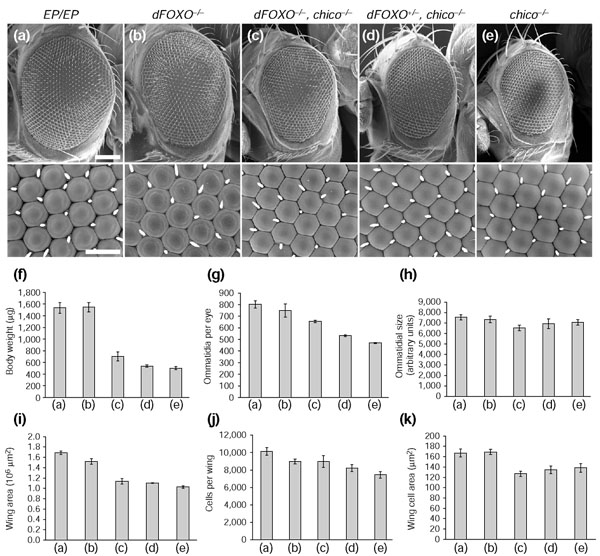Figure 4.

Loss of dFOXO suppresses the cell-number reduction in chico mutants. (a-e) Partial rescue of the chico phenotype by mutations in dFOXO. Bar sizes are 100 μm (low magnification) and 20 μm (high magnification). Each graph displays the variation of a single parameter between the five genotypes shown in (a-e): (f) body weight, (g) cell number in the eye, (h) cell size in the eye, (i) wing area, (j) cell number in the wing, and (k) cell size in the wing. (f) dFOXO-/-partially suppresses the low-body-weight phenotype of chico-/-. The suppression is less pronounced in the wing (i), because dFOXO-null mutants have significantly smaller wings than control flies, although their body weight is the same. In a chico-/- background, loss of dFOXO leads to increased cell numbers in the eye (g) and in the wing (j) compared to the chico single mutant. Although organ and tissue size is increased, cell size significantly decreases in the chico-dFOXO double mutant both in the eye (h) and in the wing (k). It seems that loss of dFOXO in a chico-/- background leads to increased proliferation rates. All values are shown ± SD. Genotypes are: (a) y w;; EP-dFOXO/EP-dFOXO; (b) y w;; EP-dFOXO21/EP-dFOXO25; (c) y w; chico1/chico2; EP-dFOXO21/+; (d) y w; chico1/chico2; EP-dFOXO21/ EP-dFOXO25; (e) y w; chico1/chico2.
